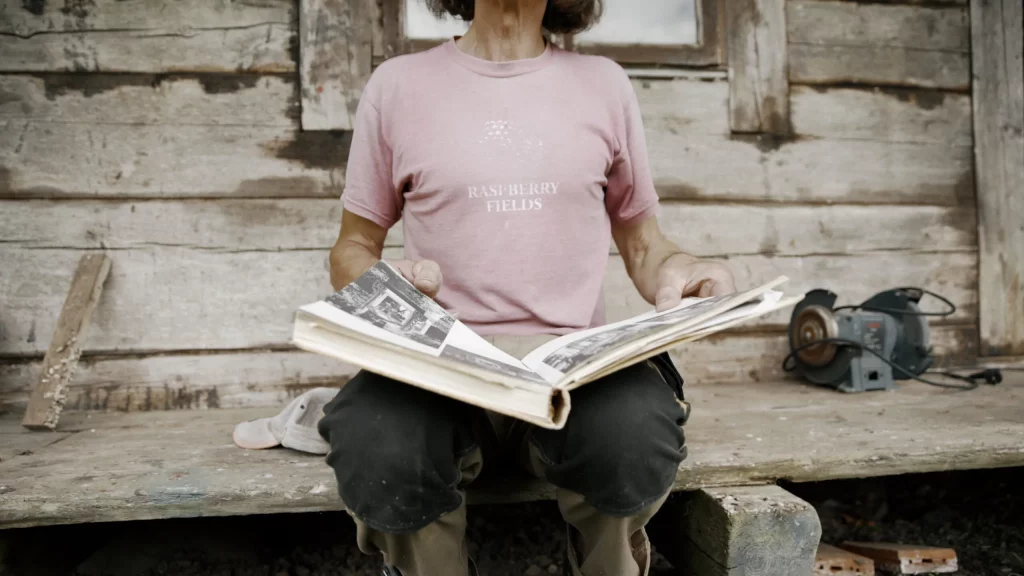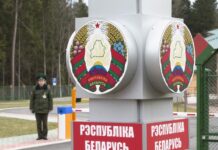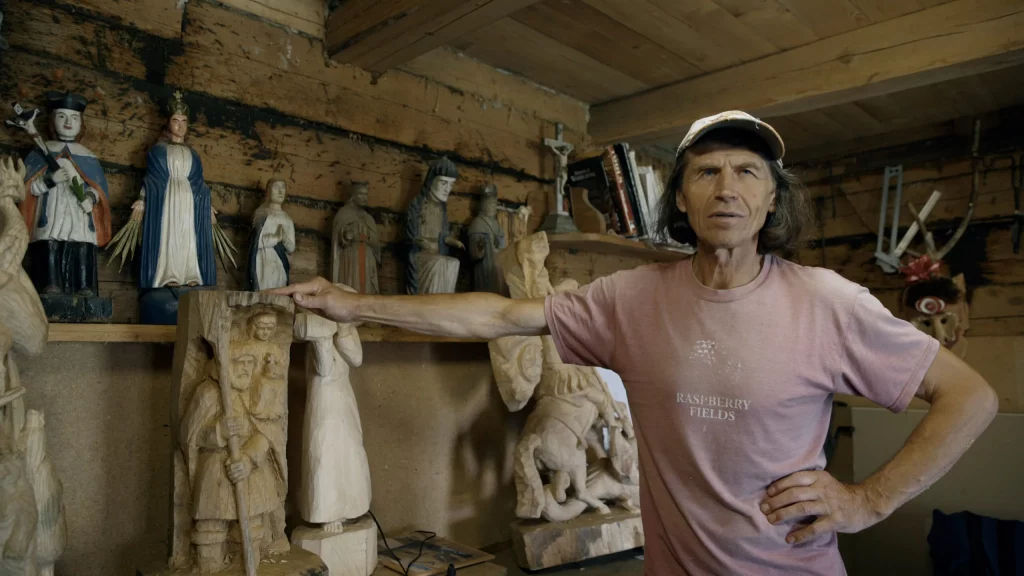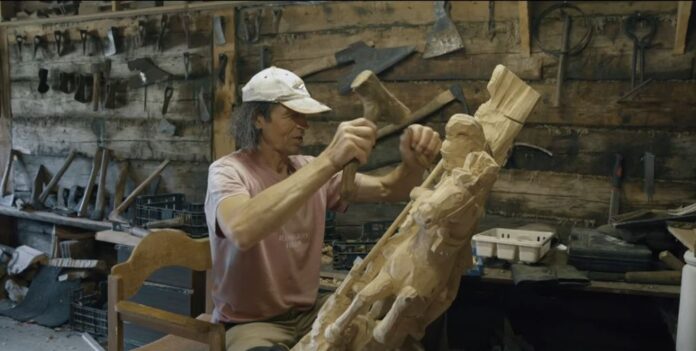
Thoughts from an interview with Antanas Vaškys
In the tiny village of Plokščiai (about 60 km from Kaunas, in Southern Lithuania), lives a cross-carver by the name of Antanas Vaškys. He is originally from Plungė, which is in the heart of Žemaitija (Samogitia), one of the five ethnographic areas of Lithuania.
In Lithuania, cross-carving includes traditional carving of saints and other subjects as well as crosses, for which Lithuania is famous. Not only is it called the Land of Crosses, but the art of cross-making is on the UNESCO list of intangible national treasures.
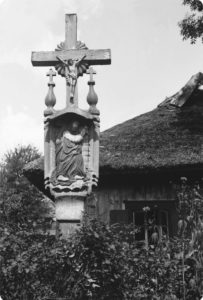
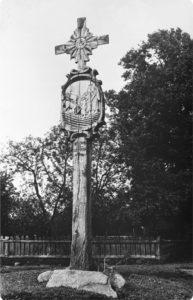
The wood-sculptors who make these unique and beloved artifacts are called “dievdirbiai” or “god-carvers”, because since ancient times their subjects were Christ-figures, and images of the pensive Christ (Rūpintojėlis) in particular, is an iconic Lithuanian objet d’art and souvenir.
The website bernardinai.lt recently published an interview with Antanas Vaškys, who revealed many interesting aspects of his art, and how the crosses in Žemaitija differ from those crafted in other areas of Lithuania.
Vaškys thinks that the art of traditional cross-making may survive at least another hundred years. It will depend on many things, he says – not only on the influence of religion, but on how committed people will be to maintaining traditions. Yet to stay alive, tradition does needs to evolve and accept innovation.
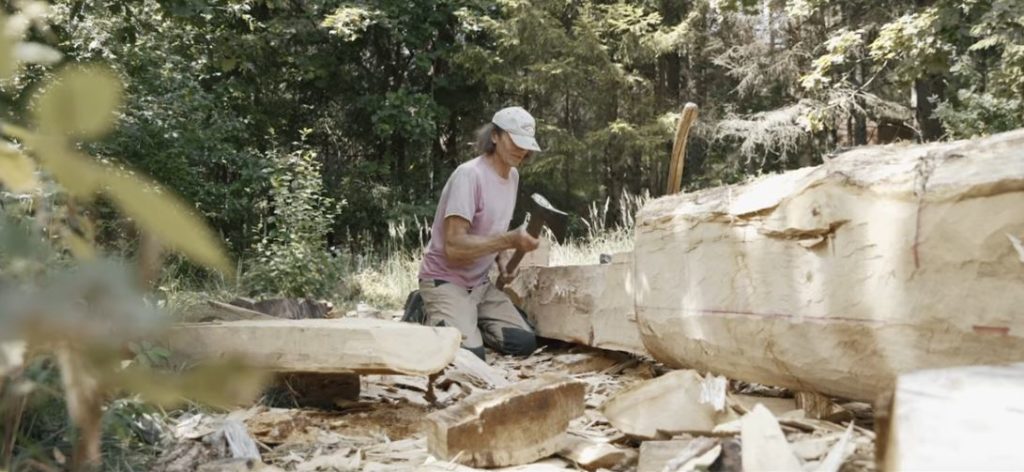
Crosses, roofed poles, chaplets, and statues of saints may stay in demand for various reasons – esthetics, religion, tradition, even snobbishness. Much will depend on youth, he says. For example – an older couple came to commission him to carve one of several oaks they had felled to clear some land. Later they cancelled the project, because their children had decided they would sell the property… Nevertheless he remains optimistic that as the younger generation ages, tradition may become more important. These crosses were always a commemoration, a memory, and people will always need that.
 Vaškys explains that tradition is a way to be unique, especially now, when the world is becoming faceless and everything is becoming horribly homogenized. For someone from abroad, the Samogitian chaplet and a cross from Dzūkija may look very similar. But close up, they reveal huge differences, as does their traditional architecture.
Vaškys explains that tradition is a way to be unique, especially now, when the world is becoming faceless and everything is becoming horribly homogenized. For someone from abroad, the Samogitian chaplet and a cross from Dzūkija may look very similar. But close up, they reveal huge differences, as does their traditional architecture.
For one thing, Samogitian sculpture is more naturalistic. Its colours are more intense. It is said that with only 60 days of sunshine in a year in this part of Lithuania, carvings turn grey and mossy, so they must be more colourful to be eye-catching. Unlike in other regions, Samogitians favour chaplets on the ground, like mini-churches, with spires, columns, and carvings of the Virgin Mary. Samogitian crosses were quite tall, with rays between the cross-bars.
Vaškys carves in the tradition of Svirskis (Vincas Svirskis, January 28, 1835-March 7, 1916, was a prominent Lithuanian folk sculptor and wood carver, known for his work in Lithuanian cross crafting, god-carving and roofed pole carving), which dictates that a cross, roofed pole or sculpture should be carved from a single piece of wood. Vaškys has crafted a cross in which the sculpture and the entire glassed in-chapel was carved from one piece.
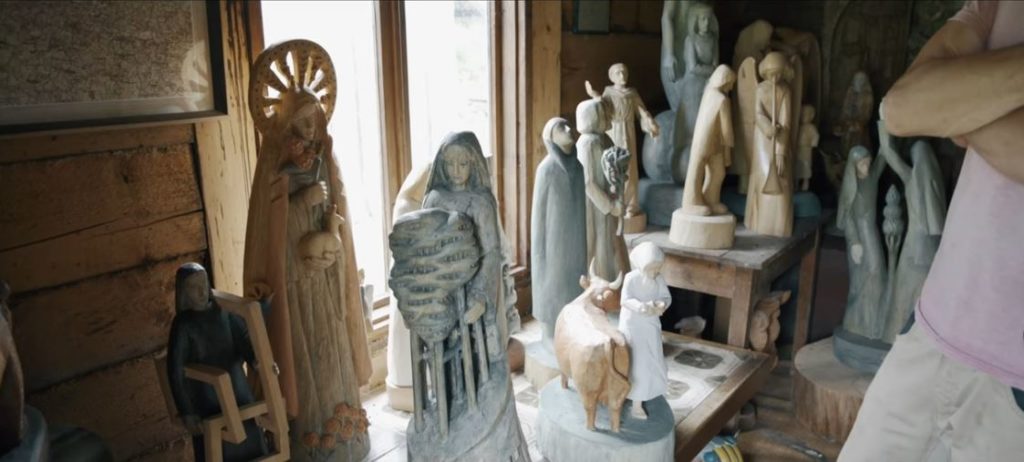
Another traditional feature on Samogitian roof-poles were shapes of the roofs – many were ten or eight-cornered, almost rounded. Also unique is the use of metalwork, finished off the carving with metal suns and crosses.
In an age when everything is disposable, many think that a cross can last 10 years and then a new one can be erected. Vaškys feels that if he has cut down an oak and carved it, the sculpture should last as long as the tree itself would have lived. If Svirskis’ creations lasted about 150 years without much care, he says, today they should keep for at least 200 years, with better paints and wood impregnation techniques.
Antanas Vaškys is only one of the many talented god-carvers working in Lithuania today. Their work is supported by the National Culture Council in a project called “The Cross-carving Tradition – a Living Link between the Past and the Present”.
Translated and abridged from Bernardinai.lt
